1 Introduction
China is the world's lowest per capita energy holdings countries, but energy consumption has been ranked first in the world; energy shortage become a major problem in the countries of China and the world development, to solve the energy shortage problem has become countries bear the brunt of the task. The limited resources of fossil energy and the environmental problems brought about by its development and utilization seriously restrict the sustainable development of economy and society. Renewable energy resources are abundant, widely distributed, have little environmental impact, and are used sustainably. Accelerating the development and utilization of renewable energy is an important approach and measure to solve China's energy and environmental problems. Regular energy use in China and the world and planning are shown in the figure below;
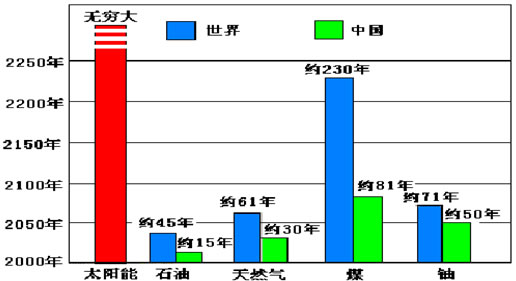
China is a country with large energy consumption. Building energy consumption accounts for 25% of the total energy consumption of the entire society, of which construction heating, air conditioning, lighting account for 14%, and energy consumption for building construction is 11%. The proportion may increase in the future, so the Chinese government In the Outline of the Eleventh Five-Year Plan (draft), it is clearly stated that China will build a resource-saving and environment-friendly society. The plan outlines that by 2010, energy consumption per unit of GDP should be reduced by 20%. For this reason, renewable energy, especially the effective use of solar energy, will have a profound impact on China's energy structure. 65% of energy conservation is mainly borne by the building envelope system. Therefore, through the integrated design of buildings, it is of great significance to promote the use of photovoltaic curtains more widely.
2. The history of photoelectric development
As early as 1839, the French scientist Becqurel discovered that light can create a potential difference between different parts of a semiconductor material. This phenomenon was later called "photovoltaic effect", referred to as "photovoltaic effect." In 1954, American scientists Chapin and Pearson made practical monocrystalline silicon solar cells for the first time at Bell Labs in the United States, and a practical photovoltaic power generation technology that converts sunlight energy into electrical energy was born. The basis of the working principle of the solar cell is the photovoltaic effect of the semiconductor PN junction, that is, when the object is exposed to light, the charge distribution state within the object changes to produce an electromotive force and an effect of the current. That is, when sunlight or other light strikes the PN junction of the semiconductor, a voltage appears on both sides of the PN junction. This is called a photo-generated voltage, which short-circuits the PN junction and generates a current.
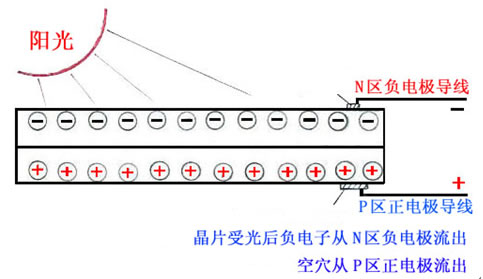
Photovoltaic power generation is a technology that uses the photovoltaic effect of the semiconductor interface to convert light energy directly into electrical energy. The key element of this technology is solar cells. After the solar cells are connected in series, they can be packaged to form a large-area solar cell module, and then a photovoltaic device can be formed by combining the power controller and other components. Photovoltaic power generation has the advantage of being less subject to geographic restrictions because it is sunny; the photovoltaic system also has the advantages of being safe, reliable, noise-free, low-pollution, energy-efficient, and without the need to consume fuel and erection of transmission lines to generate electricity on-site and for short construction periods.
Photovoltaic power generation history and current status Since the first practical photovoltaic cell was introduced in 1954, solar photovoltaic power generation has made great progress. But it is much slower than computer and fiber optic communication. The reason for this may be that people’s pursuit of information is particularly strong, and conventional energy sources can also meet human energy needs. The oil crisis of 1973 and environmental pollution in the 1990s greatly contributed to the development of solar photovoltaic power generation.
Its development process is briefly listed as follows:
In 1839 the French scientist Becquerel discovered the "photovoltaic effect", which is the "photovoltaic effect."
In 1930, Lange first proposed the use of "photovoltaic effect" to manufacture "solar cells" and turn solar energy into electrical energy.
In 1941 Orr discovered the photovoltaic effect on silicon.
In 1954, Chabin and Pearson produced a practical single-crystal solar cell at the Bell Labs of the United States for the first time, with an efficiency of 6%. In the same year, Wacker first discovered that gallium arsenide had a photovoltaic effect and deposited a cadmium sulfide film on glass to make the first thin film solar cell.
In 1955, Gini and Romfiski optimized the photoelectric conversion efficiency of materials. In the same year, the first photoelectric beacon light came out. The US RCA researched gallium arsenide solar cells.
In 1957, the efficiency of silicon solar cells reached 8%.
In 1958, solar cells were used for the first time in space and equipped with the US Pioneer 1 satellite power supply.
In 1990, Germany proposed "2000 photovoltaic rooftop projects." Each family's roof is equipped with 3 ~ 5kWp photovoltaic cells.
In 1995, the efficiency of high efficiency concentrated GaAs solar cells reached 32%.
In 1997, the United States proposed the "Clinton President Million Solar Roof Project". By 2010, 1 million households will install 3 to 5 kWp per household.
Since 1996, the world's photovoltaic power generation has developed rapidly. Continuously improve performance in several major solar cell efficiency, total annual growth rate maintained at 30% to 40%, in 1998 reached 200MWp / a; increasingly wide range of applications, especially photovoltaic technology roof plan for PV show Infinitely bright future.
3, the development history of solar cells
Divided from the history of the development of photovoltaic cells, solar cells are currently divided into the following categories, crystalline silicon cells, amorphous silicon cells, and other various compounds of semiconductor materials. The main materials include GaAs, GaInP, InGaAs, CdTe, CuInSe2 (CIS), and CuInGaSe2 (CIGS). Crystal silicon battery is divided into single crystal silicon battery and polycrystalline silicon battery; amorphous silicon battery is added with other semiconductor materials in silicon, without purification, slicing and other complex production and processing procedures.
The above types of photovoltaic cells, according to their different characteristics, have their own most suitable range of use, single crystal silicon cells and polycrystalline silicon cells can be used to build an independent photovoltaic power plant. Amorphous silicon battery can realize the photoelectric integration (BIPV) perfectly because of its unique aesthetic performance, stable and reliable power generation performance, economical low cost and diversity of design selection.
4, the advantages of using amorphous silicon cells in buildings
(1) The cost of materials and manufacturing processes is low. The cost per square meter is about 40% lower. This is because the production process is more simplified and the energy consumption is lower. The silicon film is only a few thousand angstroms thick, and the amount of expensive pure silicon material is small. At the same time, the substrate materials such as glass, stainless steel, and plastic are inexpensive.

(2) It is easy to form a large-scale production capacity. This is because the core holding process suitable for making large-area a-Si alloy thin film structural defect; simply by changing the gas flow rate or gas composition can be realized and the corresponding PIN junction laminate structure; production whole process can be automated.
(3) Variety, wide use. The film's a-Si solar battery is integrated. The device power, output voltage, and output current can all be freely designed and manufactured, and a variety of products suitable for different needs can be easily manufactured. Flexible manufacturing methods can be used to manufacture batteries for building integration and are suitable for installation in buildings.
(4) It has the performance of low-light power generation. This is due to the high light absorption coefficient, dark conductivity, and low energy level of the valence band electrons of amorphous silicon materials. When the solar radiation intensity is very low, it has the power generation performance, that is, This performance makes amorphous silicon thin-film batteries affected by wind, sand, rain, and other weather is very small, the annual power generation days of about 320 days, the maximum daily power generation can be extended from 6 am to 7 pm. The daily power generation reaches about 13 hours.
(5) Amorphous silicon thin-film batteries have light transmission, and the transmittance can be from 5% to 75%. Of course, with the increase of light transmittance, the conversion efficiency of photovoltaic cells will decrease, and it is ideal for construction. The transmittance is 25%.

Amorphous silicon battery natural lighting indoor effect, soft and comfortable light, ecological office environment.
(6) Since the first band gap of a-Si material is wider than that of single crystal silicon and polycrystalline silicon, the power output of the a-Si solar cell is not significantly dependent on the electron temperature. In practical engineering applications, the operating temperature to withstand crystalline silicon is high.
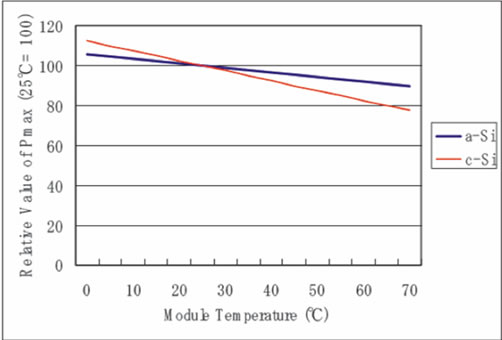
The figure above shows the distribution of power drop of crystalline silicon cells and amorphous silicon cells under the influence of temperature. When the temperature of the a-Si (amorphous Silicon) amorphous silicon cell rises to 70°C, the power drop is only about 10W, and the power of the crystalline silicon cell decreases under the same condition. Close to 30W.
(7) Amorphous silicon cells are not affected by the environment during operation, and if a small part of the crystalline silicon cells is blocked, an islanding effect will occur, which will greatly reduce the power output of the entire module.
(8) The plates of amorphous silicon cells can better match the architectural grid.
The following figure shows the architectural effects of amorphous silicon thin-film batteries and other batteries on the building facades (amorphous silicon thin-film batteries on the right and crystalline silicon cells on the left). The appearance of crystalline silicon is fragmented and messy. Amorphous silicon and buildings can be well integrated with buildings without affecting the macroscopic effects of the building.

5. Introduction of related projects at home and abroad
(1) Berlin Train Station in Germany
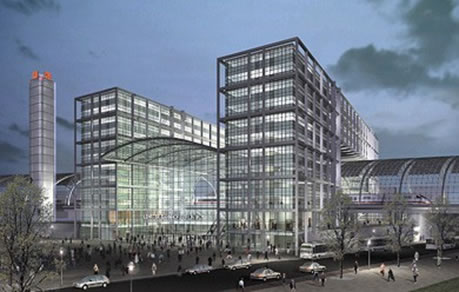
In order to welcome the 2006 World Cup, the converted Berlin train station houses an optoelectronic roof in two arc-shaped sections. The dark part is the photocell. The total area of ​​3311 square meters, the total installed capacity of 325kwp.
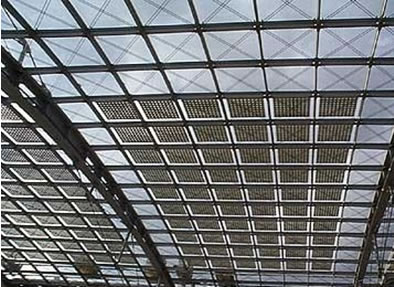
The internal effects of the Berlin railway station house are unified with the integration of electricity generation and lighting.
(2) Optoelectronic roofing works at stillwell subway station in the United States;
The photoelectric roofing project of the stillwell subway station in the United States covers a total area of ​​76,000 square feet; the photovoltaic panel uses an area of ​​50,000 square feet. Power generation peak power is 250KW; amorphous silicon battery plate specification: a-Si-40W. The following picture shows still roof subway station roof effect chart (1)

The following figure shows the layout of the wires during the construction of the stillwell subway station (2)
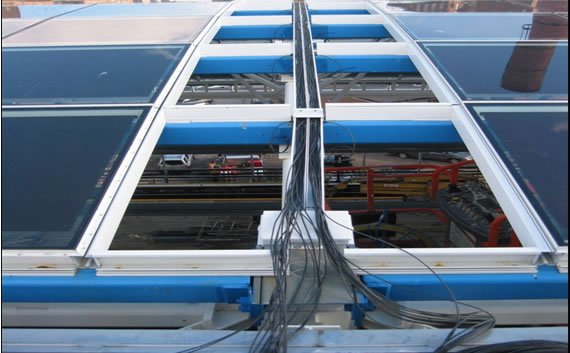
The following figure shows the power control system of the stillwell subway station (3)
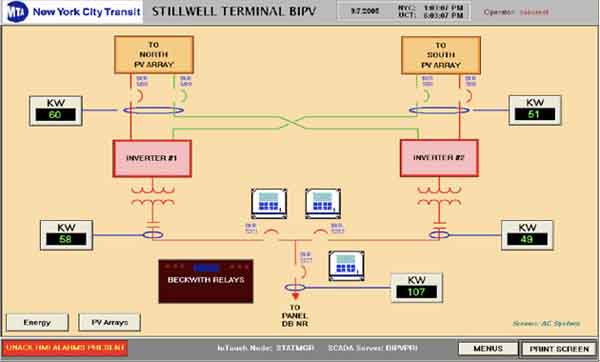
(3) New York 4 Times Square was built in the center of New York City. In the 37th to 42th floors, amorphous silicon thin-film batteries were used and applied to high-rise buildings in combination with ordinary glass curtain walls. Reduce the use of carbon dioxide emissions by more than one million pounds from today. Completion time 2001

6. Concluding remarks
With the increasing shortage of conventional energy sources, the pace of development and utilization of solar energy will not stop, photovoltaic power generation in building a combination of organic - BIPV is the development direction of solar power is widely used in construction; As technology Continuous progress and the development and use of new materials will provide more room for the development of photoelectric integration.
Precision Steel Pipe,Underground Heating Pipe,Heat Resistant Pipe
Chengsheng Steel Pipe Co., Ltd , http://www.sdsteelpipes.com